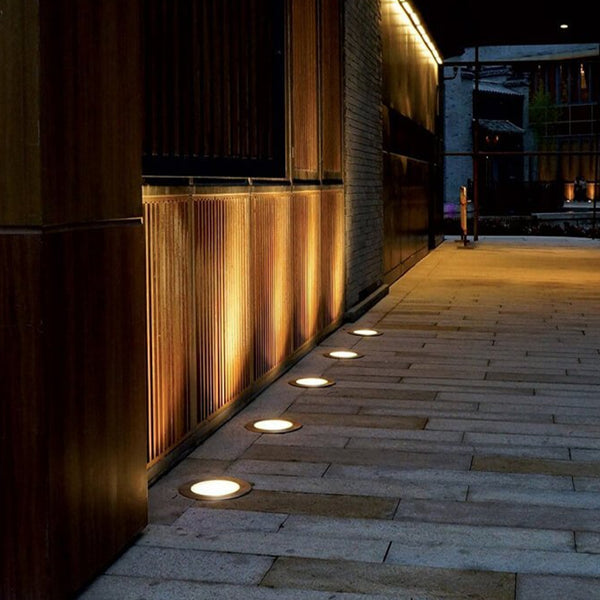Illuminate Your Driveway: Uncover the Secrets to Choosing Perfect In-Ground Lights!
When it comes to enhancing the safety and aesthetics of your home, driveway lighting plays a pivotal role. Proper lighting not only illuminates your path but also adds a touch of elegance to your property. In-ground lights are a popular choice for driveways, offering a sleek and modern look while ensuring visibility during nighttime. With a wide variety of in-ground lights available, from LED to solar options, choosing the best in-ground lights for your driveway can be a daunting task. This article aims to guide you through the process of selecting high-quality in-ground lights that suit your needs, helping you make an informed decision before you invest.

Understanding In-Ground Lights
In-ground lights, also known as recessed or well lights, are fixtures that are installed flush with the ground. They can be used in various applications, particularly in driveways, pathways, and outdoor spaces to provide subtle yet effective illumination. These lights are designed to withstand the weight of vehicles and the elements, making them ideal for outdoor use. The styles and designs of in-ground lights vary widely, including round, square, and custom shapes, allowing homeowners to choose options that complement their landscaping. Additionally, in-ground lights can be made from various materials such as stainless steel, plastic, or concrete, further expanding the aesthetic possibilities. Whether you prefer a minimalist look or something more decorative, there’s an in-ground light to suit every taste.
Key Factors to Consider When Choosing In-Ground Lights
When selecting in-ground lights for your driveway, several key factors should guide your decision. First and foremost is brightness. The lumens output will determine how well your driveway is illuminated. Energy efficiency is another crucial factor; opting for LED lights not only saves on electricity bills but also reduces the frequency of replacements. Durability is vital, especially for outdoor fixtures that will be exposed to harsh weather conditions and vehicle traffic. Look for lights rated for outdoor use with strong housing materials. Finally, consider the installation requirements. Some lights may require professional installation, while others can be easily installed by homeowners. Each of these factors impacts both the functionality and aesthetics of your driveway lighting.
Types of In-Ground Lights Suitable for Driveways
There are several types of in-ground lights to consider for your driveway, each with its own advantages and disadvantages. LED lights are highly energy-efficient and have a long lifespan but may come with a higher upfront cost. Solar lights, on the other hand, are easy to install and cost-effective since they use natural sunlight for power; however, their brightness may fluctuate depending on weather conditions. Halogen lights offer excellent brightness and crisp light color but consume more energy and have a shorter lifespan. Understanding these pros and cons will help you determine which type of in-ground light aligns with your driveway's specific needs and your overall energy goals.
Comparing Lighting Options
As you explore different lighting options, consider key aspects such as brightness, color temperature, installation ease, and maintenance requirements. Brightness is essential to ensure safety and visibility, while color temperature affects the ambiance—warm light creates a cozy atmosphere, while cool light is more modern and vibrant. Installation ease can save you time and money, so look for options that don’t require complicated setups. Additionally, some lights may need regular maintenance or replacement of bulbs, so weigh these factors against your personal preferences and the characteristics of your driveway. For instance, if your driveway is shaded, solar lights might not be the best option, while LED lights could offer a reliable solution.
Installation Tips for In-Ground Lights
Installing in-ground lights can enhance your driveway's appearance and safety when done correctly. Start by planning the layout of your lights for optimal coverage and effect. A common mistake is spacing the lights too far apart, which can lead to dark spots. Consider using a combination of lights to highlight features like trees or landscaping. Safety is paramount; ensure that any electrical connections are weatherproof and meet local codes. Lastly, take your time during installation to avoid damaging the lights or disrupting the surrounding landscape. If unsure, consulting a professional can ensure a seamless installation process.
Making an Informed Decision for Your Driveway Lighting
Choosing the best in-ground lights for your driveway is a decision that impacts both safety and aesthetics. By understanding the different styles available, considering key factors like brightness and energy efficiency, and weighing the pros and cons of various types, you can make an informed choice. Remember to assess your unique needs and driveway characteristics before making a purchase. With the right in-ground lights, you can transform your driveway into a beautifully illuminated space that welcomes you home each night.








